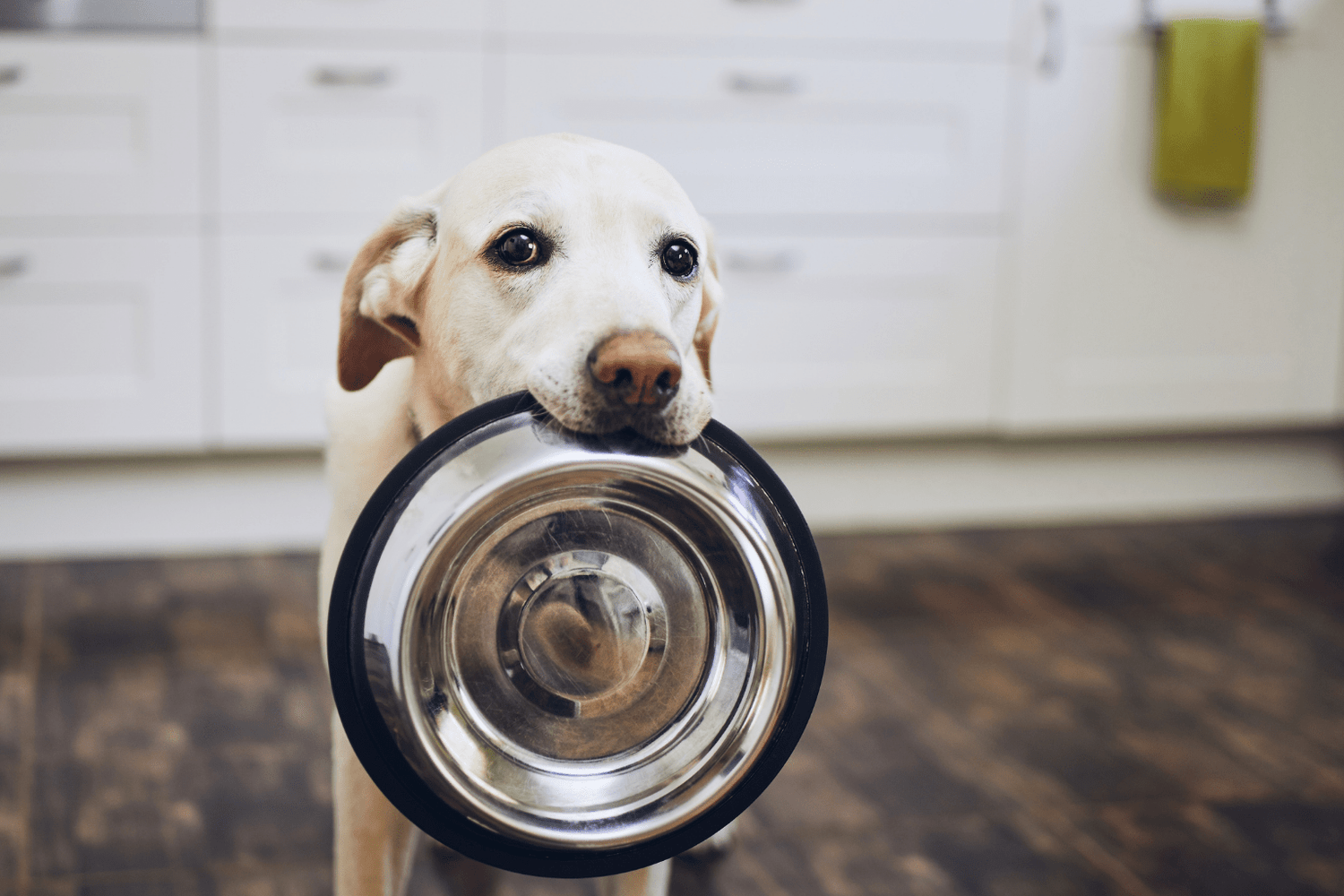Key Takeaways
- Bright packaging and bold marketing claims do not guarantee quality dog food.
- Choosing the wrong dog food can lead to health issues like itching and low energy.
- Pet parents should prioritize ingredient quality over flashy branding when selecting dog food.
- Observing your dog's reaction to new food is essential to ensure their well-being.
Table of Contents
- Why Avoid Certain Dog Food Brands?
- Red Flags, How to Spot Bad Dog Food Brands at a Glance
- The Most Common "Bad" Ingredients in Dog Food (And Why They Matter)
- Safety Scares & Recalls, What the Headlines Won't Tell You
- Are Grain-Free Dog Foods Really Safer? The Science and the Myths
- Wet, Dry, Cheap, Premium, Are the "Worst" Offenders All Alike?
- Action Steps, How to Research and Choose Safer Dog Food Brands
- ingredient sourcing and quality standards.
- Making the Switch: How to Transition Away from Problem Brands
- Supporting Your Dog's Health During Food Changes
- Building Long-Term Food Safety Habits
- Learning from Other Pet Parents' Experiences
- Our Philosophy: Natural Wellness Beyond Just Food
Brands of Dog Food to Avoid: How to Choose Better for Your Best Friend
When I first brought Tango home, I grabbed the flashiest bag in the pet store, bright colors, bold claims, perfect marketing. Within weeks, my Border Collie mix was scratching constantly and had zero energy for our hikes. That expensive "premium" food was anything but.
The truth is, many popular brands of dog food to avoid hide behind clever marketing while using questionable ingredients, cutting corners on safety testing, or accumulating concerning recall histories. As pet parents, we deserve transparency, not just pretty packaging that puts profits before our dogs' health.
This guide breaks down the red flags, reveals which ingredients signal trouble, and gives you the tools to spot truly trustworthy brands. Because your best friend deserves food that fuels their best life, not just fills their bowl. If your dog is already experiencing itching or low energy, consider supporting their recovery with Dog Allergy Relief & Immune Support or help restore their coat with Healthy Dog Skin & Coat + Fur Regrowth as you transition to better food choices.
Not a substitute for professional veterinary advice.
Why Avoid Certain Dog Food Brands?
Low-quality dog food brands can quietly undermine your pet's vitality through hidden fillers, chemical preservatives, and inconsistent safety standards. The FDA has documented over 500 pet illnesses linked to problematic commercial foods since 2014, ranging from digestive upset to serious heart conditions.
Bailey, a Golden Retriever in our community, struggled with chronic itching and dull coat for months. Within three weeks of switching from a mass-market brand loaded with artificial colors and unnamed meat meals, her scratching stopped and her energy returned. The difference wasn't magic, it was simply removing ingredients that were working against her body's natural balance.
Top Reasons to Avoid Certain Brands:
- Hidden fillers and chemical additives
- Recent recalls due to contamination
- Lack of transparent ingredient sourcing
- No third-party safety testing
The stakes aren't just about picky eating, poor nutrition affects everything from joint health to immune function, potentially shortening your dog's lifespan and diminishing their quality of life. If your dog is experiencing digestive upset, you may find this guide on how to rid a dog of worms helpful for addressing underlying issues.
Red Flags, How to Spot Bad Dog Food Brands at a Glance

The front of the bag tells a marketing story, but the ingredient list reveals the truth. Brands of dog food to avoid often use vague terms like "meat meal" (from unspecified animals), "animal by-products," or artificial preservatives like BHA and BHT, chemicals banned in human food in many countries.
Real transparency means named protein sources ("deboned chicken," not just "poultry"), clear company contact information, and an AAFCO nutritional adequacy statement. When Max's owner discovered his "natural" food contained artificial colors and corn gluten as the second ingredient, switching to a truly transparent brand eliminated his gassiness within days.
| Quality Indicator | Good Brand Signs | Red Flag Warnings |
|---|---|---|
| Protein Source | Named animals (chicken, salmon) | "Meat meal," "poultry by-product" |
| Preservatives | Mixed tocopherols, vitamin E | BHA, BHT, ethoxyquin |
| Company Info | Clear contact, manufacturing location | Vague addresses, no phone number |
| Ingredient Order | Protein first, whole foods prominent | Fillers in top 5 ingredients |
The Most Common "Bad" Ingredients in Dog Food (And Why They Matter)
Artificial colors like Red Dye #40 and Yellow #6 serve zero nutritional purpose, they're added purely to appeal to human buyers, yet they're linked to hyperactivity and allergic reactions in sensitive dogs. Similarly, chemical preservatives like BHA extend shelf life but may disrupt hormonal balance over time.
Fillers such as corn gluten meal and wheat middlings are cheap protein substitutes that lack the amino acid profile dogs need. These ingredients often trigger digestive issues and provide empty calories that leave dogs hungry despite eating adequate portions.
Top 5 Worst Ingredients to Spot:
- Artificial colors (Red #40, Yellow #6, Blue #2)
- Chemical preservatives (BHA, BHT, ethoxyquin)
- Generic proteins ("meat meal," "animal by-products")
- Excessive fillers (corn gluten, wheat middlings)
- Propylene glycol (antifreeze component, banned in cat food)
When Rachel switched her rescue dogs away from foods containing these ingredients, she noticed improved digestion across her entire pack within two weeks, proof that ingredient quality directly impacts daily comfort and long-term health. If your dog is experiencing digestive issues, consider supporting their gut with a Dog De-Wormer Broad Spectrum during the transition.
Safety Scares & Recalls, What the Headlines Won't Tell You
Major recalls reveal systemic quality control failures that often go unreported. Between 2007 and 2023, the FDA documented over 14,000 reports of pet illnesses linked to contaminated commercial dog foods, with some brands accumulating multiple violations within single years.
The 2018-2019 melamine contamination affected 16 major brands, causing kidney failure in thousands of dogs. What made this particularly devastating was the delayed disclosure, some companies waited weeks before issuing recalls, despite knowing about contamination. More recently, the 2022 Salmonella outbreak traced to a single manufacturing facility impacted 12 different brand labels, revealing how contract manufacturing can spread problems across seemingly unrelated products.
Beyond headline-grabbing recalls, regulatory inspections reveal ongoing issues. FDA facility reports from 2023 show repeated violations at major manufacturing plants: inadequate cleaning protocols, cross-contamination between product lines, and failure to test finished products before distribution. These systemic problems suggest that some brands of dog food to avoid have normalized poor quality control as a cost-cutting measure.
Stay Informed: Sign up for FDA pet food recall alerts at fda.gov/animal-veterinary, and check your brand's recall history before purchasing. A single recall might be an isolated incident, but multiple violations indicate deeper quality issues.
Are Grain-Free Dog Foods Really Safer? The Science and the Myths

The FDA's ongoing investigation into grain-free diets and dilated cardiomyopathy (DCM) has identified over 500 cases of heart disease in dogs, with certain breeds like Golden Retrievers and Labrador Retrievers disproportionately affected. The investigation, which began in 2018, found that 16 brands consistently appeared in DCM reports, with most featuring exotic proteins like kangaroo, duck, or bison combined with legume-heavy formulations.
The grain-free trend borrowed heavily from human dietary fads, but dogs' nutritional needs differ significantly from ours. While grains aren't inherently necessary for dogs, the problem isn't grain absence, it's what replaces grains. Many grain-free formulas substitute with high levels of peas, lentils, and potatoes, which may interfere with taurine absorption, an amino acid critical for heart function.
Current research suggests the issue isn't simply grain-free versus grain-inclusive, but rather the overall formulation quality. Dogs eating grain-free diets from reputable manufacturers with proper nutritional testing show no increased DCM risk. However, brands of dog food to avoid often use grain-free labeling to justify premium pricing while cutting corners on essential nutrients and quality testing.
| Criteria | Quality Grain-Free | Questionable Grain-Free | Traditional Grain-Inclusive |
|---|---|---|---|
| Primary Protein Source | Named meat (chicken, beef) | Meat meal, by-products | Named meat or meal |
| Legume Content | Moderate (under 30%) | High (over 40%) | Minimal or none |
| Taurine Testing | Regular monitoring | Rarely tested | Standard monitoring |
| FDA DCM Reports | Minimal mentions | Multiple reports | Few mentions |
For more on how to keep your dog calm and healthy during dietary changes, check out this resource on how to calm down a stressed dog.
Wet, Dry, Cheap, Premium, Are the "Worst" Offenders All Alike?
Price doesn't predict quality in dog food. Some budget brands maintain better safety records than premium boutique labels, while certain expensive foods hide inferior ingredients behind marketing buzzwords. The 2023 FDA inspection data shows violations across all price points, with some luxury brands receiving more citations than their budget counterparts.
Wet foods face different contamination risks than dry kibble. The high moisture content requires more aggressive preservation methods, and manufacturing equipment cleaning becomes critical to prevent bacterial growth. However, wet foods also typically contain fewer processed ingredients and artificial preservatives. Among dry dog food brands to avoid, the biggest red flags are those using excessive chemical preservatives like BHA, BHT, and ethoxyquin to extend shelf life.
The "premium" label often reflects marketing budget more than ingredient quality. Rachel, who manages a rescue with 30+ dogs, discovered that a $15 bag from a transparent regional manufacturer outperformed a $60 boutique brand that used contract manufacturing and vague ingredient sourcing. The key differentiator isn't price, it's company transparency about sourcing, testing, and manufacturing practices.
Boutique brands present unique risks because they often lack the resources for comprehensive safety testing. While large manufacturers have quality control issues, they typically have better contamination detection systems. Small batch doesn't automatically mean safer, especially when companies prioritize trendy ingredients over proven nutritional science. If your dog is experiencing joint discomfort or mobility issues, consider supporting them with our WALK-EASY® Hip & Joint Pain Relief as you evaluate food options.
Action Steps, How to Research and Choose Safer Dog Food Brands
Start with the "Triangle Test", evaluate every potential brand on ingredients, sourcing transparency, and company accountability. First, examine the ingredient list: the first five ingredients should be identifiable, with named proteins taking priority over meals or by-products. Avoid brands that list "meat meal" or "poultry meal" without specifying the animal source.
Next, investigate company transparency. Legitimate manufacturers readily provide sourcing information, facility locations, and testing protocols. Red flags include companies that won't disclose where their food is made, use only P.O. box addresses, or provide vague responses about
ingredient sourcing and quality standards.

The most concerning brands of dog food to avoid often source ingredients from facilities with poor oversight or use suppliers that cut corners on safety testing. Quality manufacturers will readily share their sourcing practices, third-party testing results, and facility certifications. They understand that transparency builds trust with pet parents who want the best for their furry family members.
Look for brands that provide detailed information about their protein sources, including the specific farms or regions where ingredients originate. Reputable companies often work directly with trusted suppliers and conduct regular audits of their facilities. When a brand refuses to answer basic questions about where their food comes from, that's a clear signal to keep shopping. For more information on pet food safety regulations, visit the FDA's pet food resource page.
Making the Switch: How to Transition Away from Problem Brands
If you've discovered your current dog food on a recall list or recognized troubling ingredients, don't panic. Gradual transition is key to avoiding digestive upset while moving to a safer option. Most dogs need 7-10 days to adjust to new food, but some sensitive pups may require longer.
Start by mixing 25% new food with 75% current food for the first few days. Watch for any signs of stomach upset, changes in appetite, or unusual behavior. If your dog tolerates the initial mix well, gradually increase the new food ratio every few days until you've completely switched over.
During this transition period, many pet parents find that gentle digestive support helps ease the changeover. Natural remedies can work alongside dietary changes to support your dog's comfort and well-being throughout the process. Remember, this gradual approach protects your pup's digestive system while ensuring they get the nutrition they deserve. If your dog is struggling with constipation or scooting during the switch, our Scoot Stopper & Anal Gland Support may help provide relief.
Supporting Your Dog's Health During Food Changes
Switching away from brands of dog food to avoid is just the first step in supporting your dog's overall wellness. Many pet parents discover that their dogs need additional support to recover from the effects of poor-quality nutrition, especially if they've been eating substandard food for months or years.
Signs that your dog may benefit from extra support during the transition include digestive sensitivity, dull coat, low energy, or frequent scratching. These symptoms often improve naturally once you eliminate problematic ingredients, but gentle, natural support can help speed the process.
Real Success Story: When Bailey's family switched from a recalled brand to a vet-recommended option, they noticed improvements in his energy within two weeks. Adding natural digestive support pellets helped him adjust even faster, and his coat regained its shine within a month.
At BestLife4Pets, we've seen countless dogs thrive when their families combine better nutrition with natural wellness support. Our gentle pellet remedies work alongside dietary improvements to help dogs feel their best. It's not about quick fixes – it's about supporting your dog's natural healing processes while they adjust to better nutrition. For more tips on keeping your dog active and healthy indoors, read our article on how to exercise dogs indoors.
Building Long-Term Food Safety Habits

Once you've successfully avoided problematic brands and found a quality food your dog loves, maintaining those standards becomes much easier. Develop a routine of checking for recalls every few months, even with trusted brands. Sign up for FDA pet food recall alerts and bookmark reliable pet nutrition websites for quick reference.
Keep a simple food diary noting any changes in your dog's energy, digestion, or behavior when you try new foods or treats. This creates a valuable reference if health issues arise and helps you identify patterns that might not be obvious day-to-day.
Consider establishing relationships with local pet nutrition experts or holistic veterinarians who can provide guidance when new products hit the market. Having trusted advisors makes it easier to navigate the constant stream of new brands and marketing claims in the pet food industry. For a comprehensive look at pet food safety and recalls, see this in-depth article on pet food safety and FDA regulation.
Learning from Other Pet Parents' Experiences
The pet parent community is incredibly generous with sharing experiences about dog foods to avoid and brands that have worked well for their families. Online forums, local dog parks, and veterinary waiting rooms become valuable sources of real-world feedback about different foods.
Pay attention to stories from owners of dogs similar to yours in age, size, or health status. A food that works wonderfully for a young, active Golden Retriever might not suit a senior Chihuahua with sensitive digestion. Context matters when evaluating other families' experiences.
At the same time, remember that every dog is unique. What causes problems for one pup might be perfectly fine for another. Use community wisdom as a starting point for your own research, not as the final word on what's right for your dog.
Our Philosophy: Natural Wellness Beyond Just Food
Avoiding brands of dog food to avoid is crucial, but true wellness extends beyond the food bowl. At BestLife4Pets, we believe in supporting dogs' natural healing abilities through gentle, effective remedies that work alongside good nutrition.
My journey with Tango taught me that sometimes our dogs need extra support, especially when recovering from the effects of poor nutrition or dealing with age-related changes. That's why we focus on natural pellet remedies that pet parents can easily add to their wellness routine without complicated dosing or messy liquids. If your dog needs additional immune or allergy support, explore our pet allergy products for gentle, natural options.
When you combine quality nutrition with natural wellness support, you're giving your dog the best foundation for a long, healthy, happy life. It's not about perfection – it's about making informed choices that prioritize your dog's well-being over marketing hype or convenience.
Frequently Asked Questions
What are the common red flags to watch for when choosing a dog food brand?
Watch for vague ingredient lists, excessive fillers, artificial additives, frequent recalls, and unverified grain-free claims. Bright packaging and bold marketing don’t guarantee quality, ingredient transparency and safety standards matter most.
How can low-quality dog food affect my dog's health and energy levels?
Low-quality food can lead to issues like itching, digestive upset, and low energy. Hidden fillers and chemical preservatives may quietly undermine your dog’s vitality and overall well-being over time.
Are grain-free dog foods actually safer for dogs, or is that a myth?
The idea that grain-free foods are inherently safer is mostly a myth. Some studies suggest grain-free diets may be linked to certain heart concerns, so it’s best to focus on ingredient quality rather than just grain content.
What steps should I take to safely transition my dog from a problematic food brand to a better one?
Switch gradually over 7–10 days by mixing increasing amounts of the new food with the old. Monitor your dog’s reaction closely and support their health with gentle supplements if needed. Patience and observation help ensure a smooth, stress-free change.



